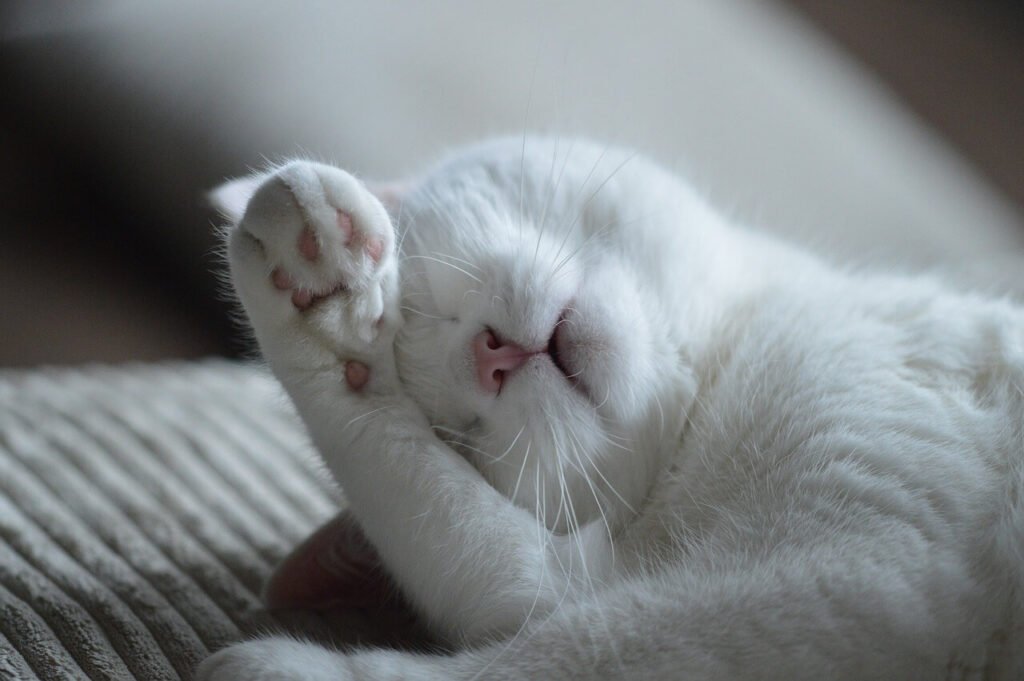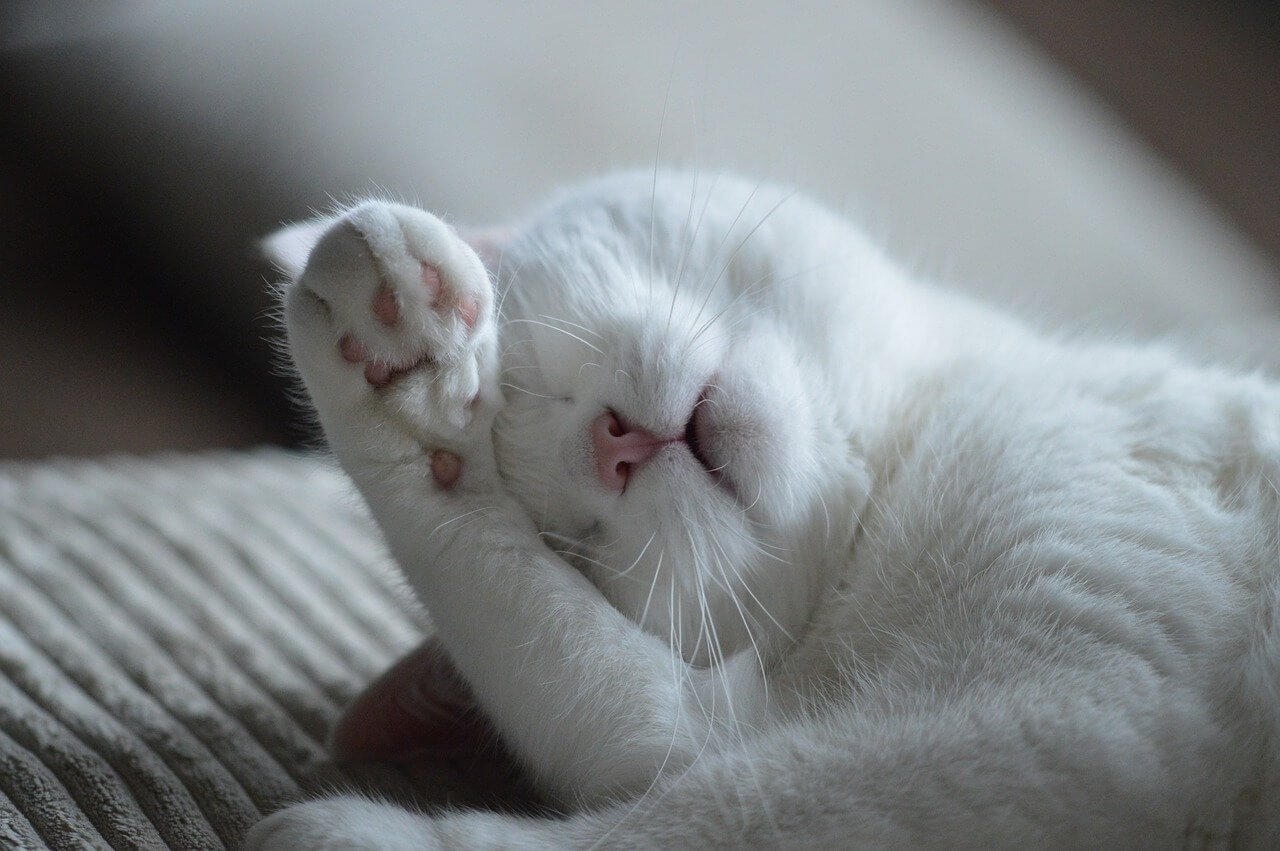Why Do Cats Bite Other Cats Bums? Understanding This Curious Behavior
Cats are known for their quirky and sometimes puzzling behaviors, but one that often leaves cat owners scratching their heads is when a cat bites another cat’s bum. While it may seem strange or even amusing, this behavior has deeper roots in feline communication, social dynamics, and instincts. Whether you’re a multi-cat household owner or simply curious about feline interactions, understanding why cats engage in this behavior can help you better interpret their relationships. In this blog post, we’ll explore the reasons behind this peculiar habit, how to address it if necessary, and what it means for your furry friends.
Possible Reasons Why Cats Bite Other Cats’ Bums
There are several explanations for why a cat might bite another cat’s bum. These reasons range from playful interactions to more serious dominance displays. Here’s a breakdown of the most common causes:
Playful Behavior:
Kittens and young cats often engage in rough play, which can include biting each other’s bums. It’s their way of practicing hunting and fighting skills.Dominance Assertion:
In multi-cat households, one cat may bite another’s bum to establish or reinforce its position in the social hierarchy.Curiosity and Exploration:
Cats use their mouths to explore their environment. Biting another cat’s bum could simply be a way of investigating scents or textures.Redirected Aggression:
If a cat is agitated by something external (like a loud noise or another animal outside), it may redirect its frustration by biting a nearby cat’s bum.Grooming Gone Wrong:
Sometimes, what starts as grooming can turn into a nip if one cat becomes overstimulated or annoyed.
While bum-biting can be normal in certain contexts, it’s important to observe your cats’ body language to determine whether the behavior is playful or aggressive. Understanding the cause will help you decide if intervention is needed.
How to Tell If the Behavior Is Harmful
Not all instances of bum-biting are problematic, but some situations may indicate underlying issues. Here’s how to identify whether the behavior is harmless or harmful.
Watch for Warning Signs:
Look for signs of distress in the bitten cat, such as yowling, hissing, or running away. These reactions suggest the behavior is not consensual.Check for Physical Injuries:
Inspect the bitten area for scratches, wounds, or hair loss. Repeated biting can lead to skin irritation or infections.Observe Frequency:
Occasional biting during play is normal, but frequent or intense biting could signal aggression or stress.Monitor Body Language:
A relaxed posture and soft purring indicate playfulness, while flattened ears, puffed tails, or growling suggest conflict.Evaluate Social Dynamics:
If one cat consistently targets another, it may indicate a power imbalance or bullying within the group.
By paying attention to these factors, you can determine whether the behavior is part of normal feline interaction or if it requires your intervention.
Check this guide 👉What Is the Best Antibiotic for Cat Bites? Best 7 Expert Tips!
Check this guide 👉Why Does My Cat Bite My Fingers? Best 7 Expert Tips!
Check this guide 👉Why Does My Cat Bite My Nose? Best 7 Expert Behavior Tips!

Signs of Playful Biting | Signs of Aggressive Biting |
|---|---|
Soft nibbling without force | Hard bites causing visible pain |
Accompanied by purring or kneading | Followed by hissing or growling |
Both cats appear relaxed afterward | One cat flees or hides |
Happens during active play sessions | Occurs during tense standoffs |
No physical injuries are present | Scratches, wounds, or bald spots |
Tips to Manage and Redirect the Behavior
If your cats’ bum-biting is causing tension or harm, there are steps you can take to manage and redirect their behavior. Here are some practical tips:
Provide Distractions:
Offer toys, scratching posts, or interactive games to redirect their energy away from each other.Separate and Reintroduce:
Temporarily separate the cats and reintroduce them slowly using positive reinforcement like treats and praise.Create Safe Spaces:
Ensure each cat has its own space to retreat to, reducing feelings of competition or territoriality.Use Positive Reinforcement:
Reward calm and friendly interactions with treats or affection to encourage good behavior.Consult a Veterinarian:
If the behavior persists or escalates, seek advice from a vet or animal behaviorist to rule out medical issues or deep-seated conflicts.
With patience and consistency, you can help your cats coexist peacefully and reduce unwanted behaviors like excessive bum-biting.
Preventing Future Bum-Biting Incidents
Prevention is key to maintaining harmony in a multi-cat household. By addressing potential triggers and fostering a positive environment, you can minimize the likelihood of future incidents. Here’s how:
Neuter or Spay Your Cats:
Altered cats are less likely to display aggressive or territorial behaviors.Maintain a Stress-Free Environment:
Minimize sudden changes, loud noises, or other stressors that could trigger aggression.Feed Separately:
Feeding cats separately prevents food-related competition and reduces tension.Encourage Playtime Together:
Supervised play sessions can strengthen bonds and teach appropriate interaction.Avoid Punishment:
Punishing your cats for biting can increase anxiety and worsen the behavior. Instead, focus on redirection and reward-based training.
By taking proactive measures, you can create a peaceful and harmonious home where your cats feel safe and secure.
Common Misconceptions About Cat Bum-Biting
Many people misunderstand why cats bite each other’s bums, leading to unnecessary worry or confusion. Let’s clear up some common misconceptions.
Myth: It’s Always Aggressive:
While it can be aggressive, many instances are playful or exploratory rather than hostile.Myth: Only Male Cats Do This:
Both male and female cats may engage in bum-biting, regardless of age or gender.Myth: It’s a Sign of Poor Training:
This behavior is instinctual and not necessarily linked to how well-trained your cats are.Myth: It Indicates Illness:
In most cases, it’s unrelated to health issues, though persistent biting warrants a vet check.Myth: It Can’t Be Stopped:
With proper management and intervention, you can reduce or eliminate harmful biting behaviors.
Dispelling these myths helps you approach the behavior with a clearer perspective and realistic expectations.
Fun Facts About Cat Interactions
Cat interactions are full of surprises and interesting quirks. Here are some fun facts about how cats communicate and bond with each other.
Tail Position Matters:
A raised tail signals friendliness, while a puffed-up tail indicates fear or aggression.Scent Marking Is Key:
Cats often sniff and lick each other’s bums to gather information through scent glands.Bunting Builds Bonds:
Rubbing heads or bodies is a sign of trust and affection among cats.Play Mimics Hunting:
Wrestling and biting during play mimic predatory behaviors, helping kittens learn survival skills.Purring Isn’t Always Happy:
Cats sometimes purr to self-soothe during stressful situations, not just when they’re content.
These facts highlight the complexity of feline relationships and remind us that there’s always more to learn about our feline companions.
How to Strengthen Cat Relationships
Building strong bonds between your cats can reduce conflicts and promote harmony. Here are some strategies to foster positive relationships.
Introduce Them Gradually:
When introducing new cats, give them time to adjust by keeping them separated initially.Use Scent Swapping:
Swap bedding or toys between cats to familiarize them with each other’s scent.Reward Calm Interactions:
Praise and treat your cats when they interact peacefully to reinforce good behavior.Provide Plenty of Resources:
Ensure there are enough litter boxes, food bowls, and resting areas to prevent competition.Engage in Group Activities:
Play with all your cats together using wand toys or laser pointers to encourage teamwork.
By nurturing their relationships, you can create a happy, balanced environment where your cats thrive.
Frequently Asked Questions About Cat Bum-Biting
Is it normal for cats to bite each other’s bums?
Yes, it can be normal during play or grooming, but consistent or aggressive biting may indicate a problem.
Should I stop my cats from biting each other?
Only if the behavior is harmful or causing distress. Otherwise, it’s usually part of their natural interactions.
Can neutering reduce bum-biting behavior?
Neutering can help reduce territorial or aggressive behaviors, including excessive biting.
What should I do if one cat gets hurt?
Clean the wound gently and consult a veterinarian if necessary to prevent infection.
How can I tell if my cats are playing or fighting?
Playful interactions are accompanied by relaxed body language, while fights involve growling, hissing, or fleeing.
Understanding Feline Behavior: The Mystery of Bum-Biting
Cats are fascinating creatures with complex social lives and unique ways of communicating. While biting another cat’s bum might seem odd to us, it’s often just another form of feline expression. By observing your cats closely and addressing any concerning behaviors early, you can ensure they live happily together. Remember, every cat is different, and understanding their individual personalities is key to fostering a loving, peaceful household. With patience, care, and a little humor, you’ll find that even the quirkiest behaviors have meaning.
Can a Cat Die from a Cold? Best 7 Expert Tips! Learn how to identify, treat, and prevent feline colds while understanding when to seek veterinary care for your cat’s health.
Cat Screaming for Food: Best 7 Expert Tips! Discover effective strategies to manage your cat's food-related vocalizations and create a peaceful feeding routine.
Aspiration Pneumonia in Cats: Best 7 Expert Tips! Discover causes, symptoms, and treatment advice to protect your cat’s respiratory health and ensure a speedy recovery.
Hip Dysplasia in Cats: Best 7 Expert Tips! Discover expert advice on managing hip dysplasia in cats, from symptoms and prevention to treatment options for a happier, healthier feline life.





